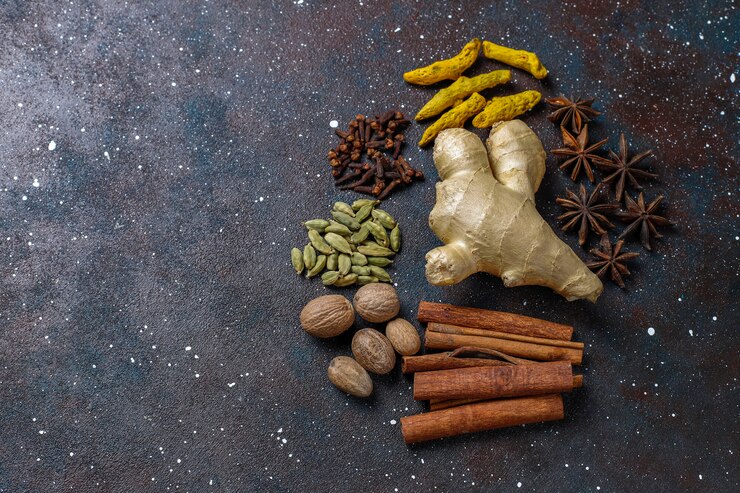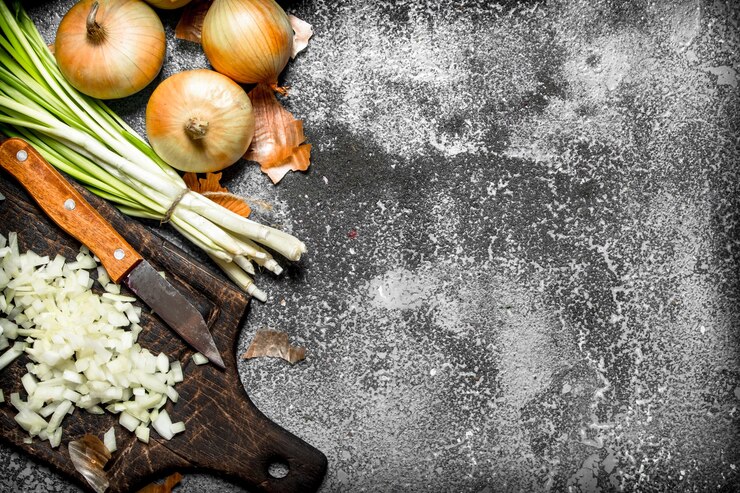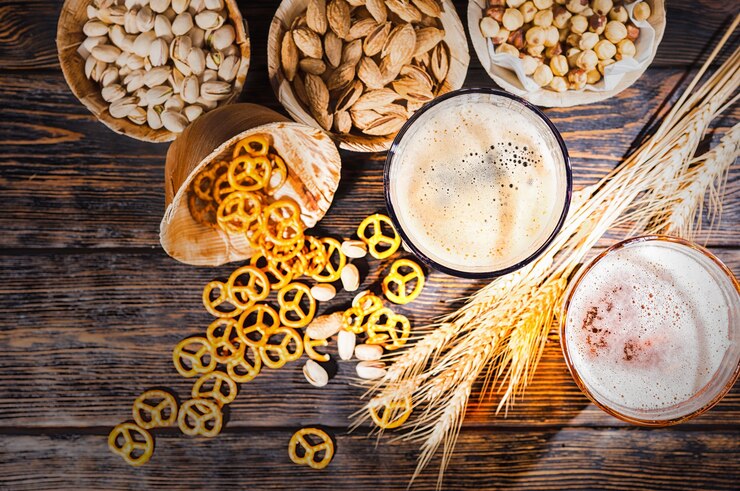Cardamom, often dubbed the “Queen of Spices,” is a spice that has enchanted cooks and healers for centuries. Originating from the lush forests of Southern India, cardamom is part of the ginger family and has traveled far and wide, finding its place in kitchens and apothecaries around the globe. From its humble beginnings as a wild plant in the Western Ghats of India to its prominent role in ancient trade routes, cardamom’s history is as rich and complex as its flavor.
In the East, cardamom’s popularity soared as it became a staple in Indian Ayurveda and Chinese medicine. The ancient Greeks and Romans also had a fondness for this spice, using it to enhance the flavors of their wines and dishes. Over time, cardamom’s allure spread across continents, cementing its status as a beloved spice in both culinary and medicinal traditions.
Today, cardamom continues to captivate with its sweet and spicy notes, making it a favorite among chefs and home cooks alike. Its versatility extends beyond flavor, offering numerous health benefits and cultural significance. This blog post will explore the many facets of cardamom, from its diverse uses to its historical impact, providing insight into why this spice remains a treasured ingredient worldwide.
The Many Uses of Cardamom in Culinary, Medicinal, and Aromatic Applications
Cardamom’s versatility is truly remarkable, as it lends its unique aroma and flavor to a variety of culinary, medicinal, and aromatic applications. In the culinary world, cardamom is a staple ingredient in both sweet and savory dishes. Its fragrant and slightly citrusy flavor enhances everything from Indian curries and Middle Eastern stews to Scandinavian pastries and spiced teas. Cardamom’s ability to complement a wide range of flavors makes it a prized spice in kitchens around the world.
Traditional medicine systems like Ayurveda and Traditional Chinese Medicine have long recognized cardamom’s potential to aid digestion, alleviate respiratory issues, and reduce inflammation. Modern research supports many of these claims, highlighting cardamom’s antioxidant and antimicrobial properties. Whether used in teas, tinctures, or capsules, cardamom continues to be a popular natural remedy for various ailments.
In the realm of aromatherapy, cardamom’s essential oil is cherished for its warm and comforting scent. It is often used in diffusers and massage oils to promote relaxation and mental clarity. The spice’s aromatic qualities also extend to personal care products, where it is used in perfumes, soaps, and candles to impart a sense of luxury and sophistication. Cardamom’s diverse applications make it a versatile and valuable ingredient in multiple aspects of daily life.
Health Benefits of Cardamom and its Role in Traditional Medicine
Cardamom offers an impressive array of health benefits, making it a valuable addition to any diet. One of the most well-known benefits of cardamom is its ability to aid digestion. The spice contains compounds that stimulate the digestive system, helping to alleviate symptoms of indigestion, bloating, and gas.
In addition to its digestive benefits, cardamom is known for its anti-inflammatory and antioxidant properties. These properties help protect the body from oxidative stress and inflammation, which are linked to numerous chronic diseases. Consuming cardamom regularly may help support heart health, improve circulation, and boost the immune system. Its antimicrobial properties also make it an effective natural remedy for fighting infections and maintaining oral health.
Cardamom’s benefits extend to mental health as well. The spice is believed to have mood-enhancing properties, making it a popular choice in aromatherapy for promoting relaxation and reducing stress. In traditional medicine, cardamom is sometimes used to treat anxiety and depression, offering a natural alternative to conventional treatments. With its wide-ranging health benefits, cardamom remains a staple in natural medicine practices around the world.
Cooking with Cardamom Tips for Incorporating it into Various Cuisines
Cooking with cardamom is a delightful experience, as its unique flavor enhances a wide range of dishes. To make the most of this versatile spice, it’s important to know how to incorporate it into various cuisines. One of the simplest ways to use cardamom is by adding whole pods to stews, curries, and rice dishes. The pods release their flavor during the cooking process, infusing the dish with a subtle yet distinctive aroma.
For sweet dishes, ground cardamom is a popular choice Cardamom is also a key ingredient in many spiced beverages, such as chai tea and mulled wine. A pinch of ground cardamom can elevate the flavor profile of these drinks, making them even more enjoyable.
When cooking with cardamom, it’s important to remember that a little goes a long way. Experimenting with different recipes and cuisines can help you discover new and exciting ways to incorporate cardamom into your cooking, allowing you to enjoy its unique taste in a variety of dishes.
Sourcing and Storing Cardamom to Preserve its Freshness
To fully enjoy the flavor and benefits of cardamom, it’s essential to source and store it properly. When purchasing cardamom, look for pods that are bright green and plump, as these indicate freshness and quality. Avoid pods that appear dry or discolored, as they may lack flavor and aroma. Cardamom is available in both whole pod and ground forms, but whole pods tend to retain their flavor better over time.
Once you’ve sourced high-quality cardamom, proper storage is key to preserving its freshness. Keep cardamom pods in an airtight container, away from direct sunlight and heat. A cool, dark pantry or cupboard is an ideal storage location. If you purchase ground cardamom, it’s best to store it in a similar manner, but be aware that it may lose its potency more quickly than whole pods.
For optimal flavor, consider grinding cardamom seeds as needed rather than purchasing it pre-ground. This ensures that the spice retains its full aroma and taste. With proper sourcing and storage, cardamom can remain fresh and flavorful for months, allowing you to enjoy its unique qualities in your cooking and wellness routines.
Cardamom in Popular Culture Significance in Cultures and Traditions
In India, cardamom is an essential ingredient in both everyday cooking and festive dishes. Cardamom’s aromatic qualities make it a popular choice for spicing teas and coffees, creating comforting beverages enjoyed by many.
In the Middle East, cardamom is a cherished spice, often added to coffee to enhance its flavor and aroma.
These aromatic pastries showcase cardamom’s ability to complement sweet flavors and create memorable culinary experiences. Across the globe, cardamom continues to play a vital role in cultural traditions and celebrations.
The Future of Cardamom Potential in Modern Applications

L are likely to attract more attention from researchers and consumers alike. Its anti-inflammatory, antioxidant, and antimicrobial properties make it an attractive ingredient in the development of natural health products and supplements.
In the culinary world, cardamom’s versatility ensures its continued popularity among chefs and home cooks. Innovative recipes and fusion cuisines offer exciting opportunities to explore new ways of incorporating cardamom into dishes.
Cardamom’s potential extends beyond the kitchen and wellness realms. The future of cardamom is bright, with endless opportunities for innovation and exploration in modern applications.
Conclusion Celebrating Cardamom’s Timeless Appeal
In conclusion, cardamom is a spice with a rich history and diverse applications that continue to captivate people around the world. From its origins in the forests of Southern India to its prominent role in global culinary traditions, cardamom’s timeless appeal is undeniable. This versatile spice offers a wealth of health benefits, making it a valuable addition to both traditional and modern wellness practices.
Whether you’re a seasoned chef or a home cook, experimenting with cardamom in your dishes can unlock new flavors and culinary experiences. By sourcing and storing cardamom properly, you can ensure that its unique aroma and taste remain fresh and potent for months to come. Cardamom’s cultural significance and potential in modern applications highlight its enduring importance and versatility.






